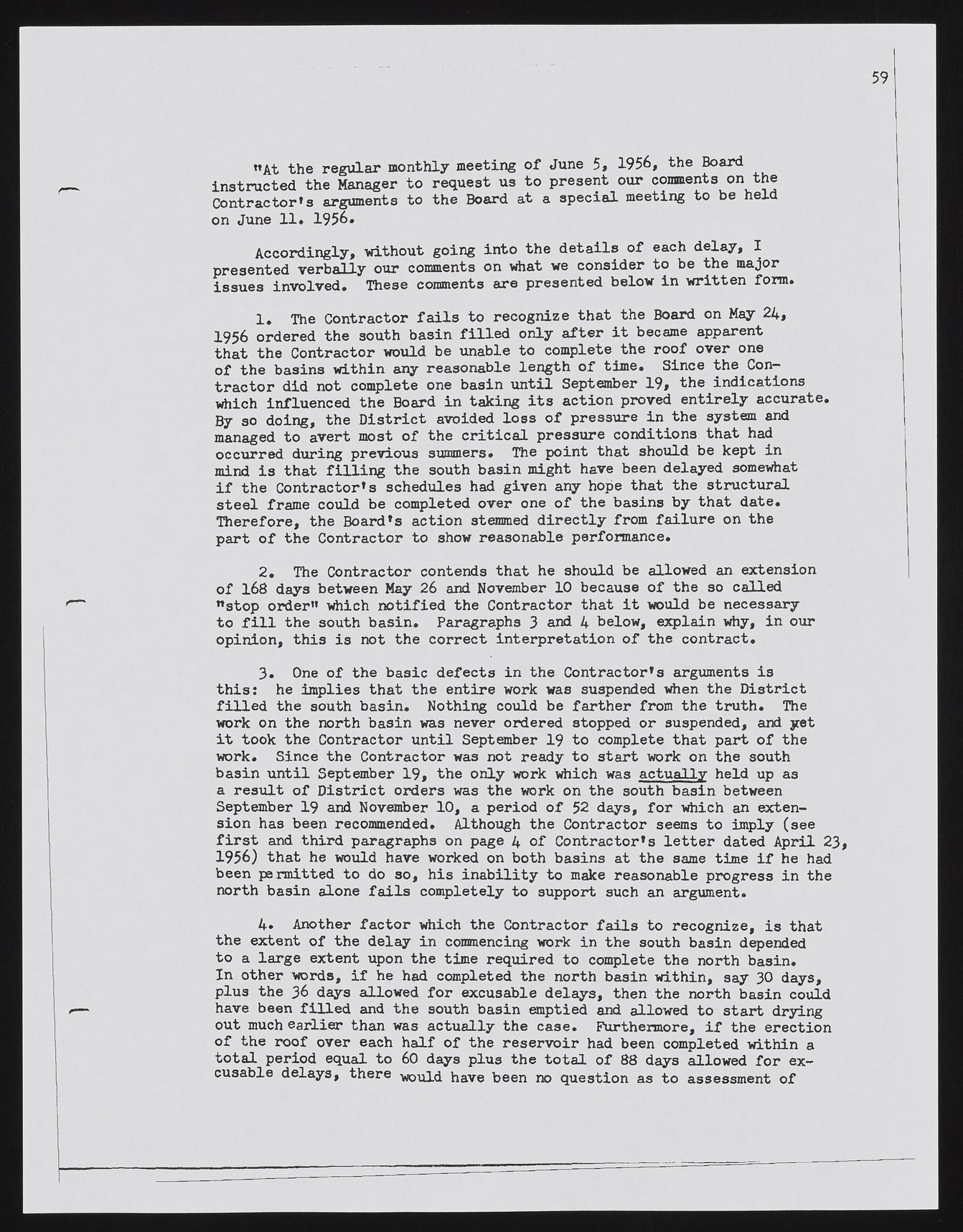Copyright & Fair-use Agreement
UNLV Special Collections provides copies of materials to facilitate private study, scholarship, or research. Material not in the public domain may be used according to fair use of copyrighted materials as defined by copyright law. Please cite us.
Please note that UNLV may not own the copyright to these materials and cannot provide permission to publish or distribute materials when UNLV is not the copyright holder. The user is solely responsible for determining the copyright status of materials and obtaining permission to use material from the copyright holder and for determining whether any permissions relating to any other rights are necessary for the intended use, and for obtaining all required permissions beyond that allowed by fair use.
Read more about our reproduction and use policy.
I agree.Information
Digital ID
Permalink
Details
More Info
Rights
Digital Provenance
Publisher
Transcription
t»At the regular monthly meeting of June 5, 1956, the Board instructed the Manager to request us to present our comments on the Contractor*s arguments to the Board at a special meeting to be held on June 11. 1956. Accordingly, ?without going into the details of each delay, I presented verbally our comments on what we consider to be the major issues involved. These comments are presented below in written form. 1. The Contractor fails to recognize that the Board on May 24, 1956 ordered the south basin filled only after it became apparent that the Contractor would be unable to complete the roof over one of the basins within any reasonable length of time. Since the Contractor did not complete one basin until September 19» the indications which influenced the Board in taking its action proved entirely accurate. By so doing, the District avoided loss of pressure in the system and managed to avert most of the critical pressure conditions that had occurred during previous summers. The point that should be kept in mind is that filling the south basin might have been delayed somewhat if the Contractor’s schedules had given any hope that the structural steel frame could be completed over one of the basins by that date. Therefore, the Board’s action stemmed directly from failure on the part of the Contractor to show reasonable performance. 2. The Contractor contends that he should be allowed an extension of 168 days between May 26 and November 10 because of the so called "stop order” which notified the Contractor that it would be necessary to fill the south basin. Paragraphs 3 and 4 below, explain why, in our opinion, this is not the correct interpretation of the contract. 3. One of the basic defects in the Contractor’s arguments is this: he implies that the entire work was suspended when the District filled the south basin. Nothing could be farther from the truth. The work on the north basin was never ordered stopped or suspended, and jret it took the Contractor until September 19 to complete that part of the work. Since the Contractor was not ready to start work on the south basin until September 19, the only work which was actually held up as a result of District orders was the work on the south basin between September 19 and November 10, a period of 52 days, for which an extension has been recommended. Although the Contractor seems to imply (see first and third paragraphs on page 4 of Contractor’s letter dated April 23, 1956) that he would have worked on both basins at the same time if he had been permitted to do so, his inability to make reasonable progress in the north basin alone fails completely to support such an argument. 4. Another factor which the Contractor fails to recognize, is that the extent of the delay in commencing work in the south basin depended to a large extent upon the time required to complete the north basin. In other words, if he had completed the north basin within, say 30 days, plus the 36 days allowed for excusable delays, then the north basin could have been filled and the south basin emptied and allowed to start drying out much earlier than was actually the case. Furthermore, if the erection of the roof over each half of the reservoir had been completed within a total period equal to 60 days plus the total of 88 days allowed for excusable delays, there -would have been no question as to assessment of

